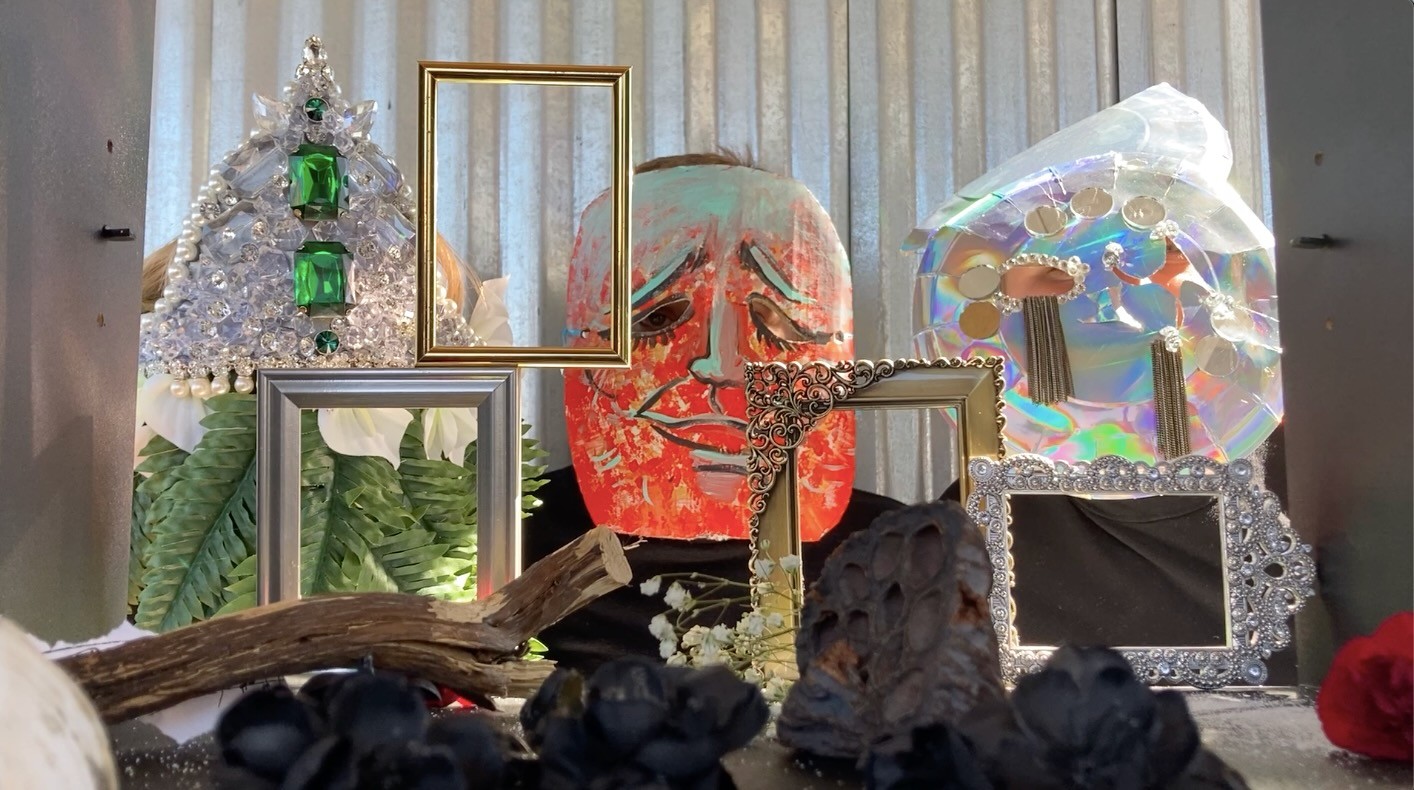We recently connected with Indigo Cook and have shared our conversation below.
Indigo , thank you so much for taking the time to share your lessons learned with us and we’re sure your wisdom will help many. So, one question that comes up often and that we’re hoping you can shed some light on is keeping creativity alive over long stretches – how do you keep your creativity alive?
I’m a passionate believer in trash these days. I like to think of it as a way of letting go of the need for perfection or endless productivity that is so heavily encoded into our society. Making trash, watching or reading or listening to trash, supporting and laughing alongside my friends in their trashy endeavors – these are all creative practices for me. My relationship to creativity has always been centered around curiosity and playfulness, and I feel trash can embody these exact qualities. When I celebrate trash I am celebrating failure, experimentation, absurdity, joy, creation, decomposition, and evolution. Sometimes the art I make isn’t any good, sometimes it’s total trash, but it doesn’t need to be anything else because the simple act of making it and the permission to throw it away later opens up so much space to keep learning and keep creating.
Appreciate the insights and wisdom. Before we dig deeper and ask you about the skills that matter and more, maybe you can tell our readers about yourself?
I grew up dancing and playing music and devouring just about any book I could get my hands on, and my career (as a dancer/musician/
I received my bachelor’s degree at Westminster University in Salt Lake City, where I majored in percussion performance and was very involved in the dance department. While there I had the opportunity to study and work with some incredible artists and became very passionate about experimental art and collaborative creative processes. After graduating I spent several years freelancing as a performer and cobbling together all the odd jobs you might expect from a starving artist.
I believe fiercely in the power of art to connect and deepen communities, and I’ve been proud to work over the years as an arts educator, teaching dance and music to students in local elementary schools, and as an community event organizer for an annual art festival, Art for the Recovery Community, which will be hitting the 6-year milestone this summer. My main passion project since graduating, however, has been founding and directing a wonderful group of performing artists, Interdisciplinary Arts Collective. We make work together and perform all around the city, presenting art that ranges from opera to sonic experiments and installations featuring dance, music, and visual art.
This past fall I started a masters program at Duke University in North Carolina, studying embodied interdisciplinary praxis. I’ve been having a blast splitting my time between school, getting to know the arts community in Durham, and continuing to work with Interdisciplinary Arts Collective back home in Salt Lake. I’ve got several projects in the works in both places, you’re welcome to check them out at interdisciplinaryartscollec
If you had to pick three qualities that are most important to develop, which three would you say matter most?
I’ve mentioned these previously, but curiosity and playfulness are the two qualities I try to cultivate most in myself. Watch everything, read everything, listen to everything, feel everything you can. But don’t ever take any of it too seriously (including this advice). Life is chaotic and contradictory and mysterious and frequently absurd, and giving yourself permission to let go of control, to be a little absurd yourself, can be an occasionally terrifying but simultaneously magical practice.
The third skill I would highly recommend is reconsidering your body’s relationship to verticality. So much of our day-to-day lives is regulated by how our bodies are expected to fit in space: sit in this chair, stand in this line, lie in this bed at night, repeat. One of my favorite experiments is to ask where else my body might fit and how those new spaces might influence me. Crawl under something you might ordinarily walk past, stand on something you would normally sit on, go upside-down whenever you get the chance. Ideas about what our bodies are *allowed* to do can be so impactful, often in ways we don’t even consciously realize, toward what we believe our bodies are *capable* of doing. I love finding small ways to push against and expand those ideas
Awesome, really appreciate you opening up with us today and before we close maybe you can share a book recommendation with us. Has there been a book that’s been impactful in your growth and development?
I get all of my best book recommendations from my twin sister, and after she hounded me for years I finally read “Invisible Cities” by Italo Calvino this summer. I cannot recommend it highly enough.
It’s a novel written as a series of imagined conversations between Marco Polo and Kublai Khan, during which Polo describes the cities through which he has traveled to the emperor. The book is on one level about the power and potentiality of language – how we use words to invoke the world around us, and how those words can at times fail. It is also a meditation on the relationships between our bodies, our environment, and how we understand home. I became an artist because I believed that art can help us get to places both deeper within ourselves and farther out in the world than we could ever get to simply by ourselves, and this book offers its reader just such a journey.
Contact Info:
- Website: interdisciplinaryartscollective.com
- Instagram: @indigorain1








Image Credits
Photo 1: Joshua Yago Mora Photo 3: Dani Mendez Photo 6: James Westervelt




